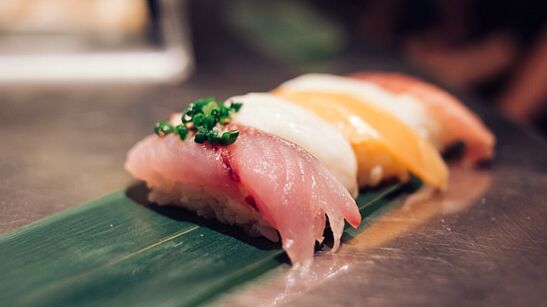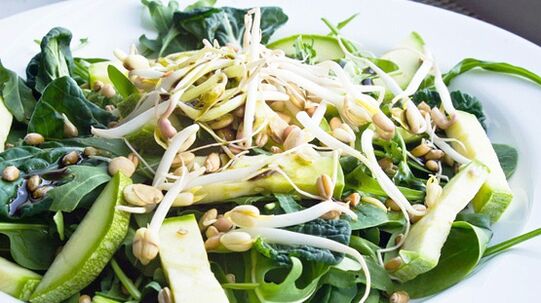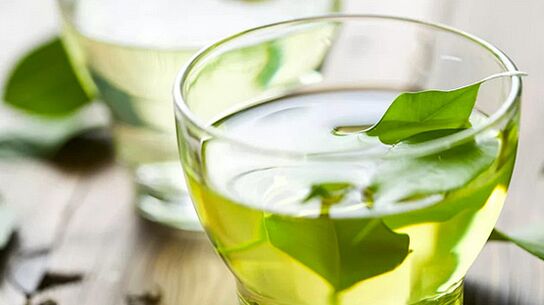
Let's say it right away. Most of the "Japanese" diets on the web have nothing to do with Asian cuisine or the diets discussed below.. Usually, these pseudoJapanese foodThey recommend that you eat "bird-sized" boiled cabbage, a few eggs, and 100 grams of meat or fish a day, reduce your meals to three, and live on this pattern for up to 2 weeks. no! This meager diet is not for people who are actively working.
Why is the Japanese theme and everything under it so popular?
For Europeans, the Land of the Rising Sun has always been attractive and incomprehensible. Perhaps this stems from Japan's long-standing isolation from Western civilization. In our traditional sense, what are they Japanese? They are technical, but believe in spirituality; conservative, but invent the "Ganguro" style; restrained, but capable of wild aloofness; appreciate life even in small stems, but historically elevate suicide as aGlorious ceremony. Islanders provide the world with the finest carvings and Pokémon. Also, they are slim and have a long lifespan. Why?
You can talk about genetics and physiology, or you can answer this: we are what we eat.
This article is based on Elisa Tanaka's book The Japanese Diet.
Traditional ingredients of Japanese cuisine
I lie in the shade
my rice pushes me
mountain stream.
Meter
For the Japanese, rice is "the first of all things" like our bread. It is a healthy source of carbohydrates and does not containgluten free. Japanese residents eat a variety of rice, but prefer brown rice cooked in sesame oil.
fish and seafood

In the daily diet of the inhabitants of the Land of the Rising Sun, fish dishes ranked second in quantity. The protein structure of fish is complete, easy to digest, and contains essential amino acids. However, Japanese do not eat smoked or salted fish - only fresh sea or fresh water. The fat contained in fish is fusible and won't deposit on your thighs with cellulite, but it will provide the body with complete polyunsaturated fatty acids.
seaweed
Seaweed (aka kelp, brown seaweed) is widely used in Japanese cuisine: added to rice, fish dishes or soy dishes. Kelp is a good preventative for thyroid disease, atherosclerosis and heart attack and is rich in iodine, minerals and macronutrients. Also, the inhabitants of the Japanese islands use dried kelp instead of the usual table salt.
Vegetables and Beans
True Japanese cooking is impossible without vegetables. This is of course all kinds of cabbage, radishes, garlic, green onions, cucumbers and tomatoes, eggplants, carrots, peppers, beans, asparagus, spinach, celery and all kinds of lettuce.
buds and buds

A valuable source of nutrition because sprouts are eaten "live" - that is, their benefits are not killed by heat treatment. Furthermore, sprouted grains are more useful than "sleeping" grains because all life processes are activated in them.
Suggest: Bean sprouts are available in any large supermarket, or you can sprout them in the window by yourself. Take 2 tablespoons of seeds or grains, put them in a container and add water at room temperature so that the liquid level is 6 cm above the surface of the grains. Let stand for 7-12 hours, covering the container with gauze. Then drain and rinse the beans thoroughly. Bean sprouts should be kept out of light and can be eaten with salads, soups, or as a vegetable substitute for a second course. Just don't use a lot of stock for the future.
fruits and berries
Instead of traditional pastries and sweets, Asians eat fruits as desserts. At the same time, it is also important to eat seasonal fruits and berries, i. e. do not eat strawberries in winter.
Spices and Seasonings
Curry, black pepper, red and chili peppers, fennel, turmeric, garlic, horseradish, dill, ginger (fresh and pickled), basil, mustard seeds, coriander, cinnamon are commonly added to many dishes. But instead, bay leaves were not used. Salt is also not highly valued, instead use dried kelp powder (as we already mentioned), soy sauce or sesame oil.
green tea

Tea is believed to have many medicinal properties: strengthening teeth, soothing the mind, curing heart disease, neutralizing poisons and helping to prolong life. The basic principle of Japanese tea drinking is: "Drink-Share, Continue-Drink". The second cup of tea is considered the most valuable (especially if you use the cup itself to make the tea).
Suggest: To make the tea more fragrant and useful, first rinse the teapot with boiling water, cover it and heat it up. Then rinse the tea leaves with lukewarm water and place in the teapot at a rate of 1-2 teaspoons. For a cup of tea, fill the tea leaves with water no higher than 80°C. First, pour water into a third of the teapot and let it steep for 3-5 minutes. After that, fill up halfway and leave again, but for 1 minute. Then add as much water as you need to drink the tea and let it brew for a minute. Tea is ready.
tofu (tofu)
Tofu provides complete protein for Asian vegetarians: 240 grams of tofu contains as much protein as two eggs. 100 grams of tofu contains 20% more calcium than 100 grams of milk. Soy protein is 95% digestible and rich in lysine, calcium, iron, vitamins B, E and K. Tofu is an excellent dietary product that is high in nutritional value and very low in calories. it hardly evercarbohydrateAnd no cholesterol. Unlike acidic meat, tofu is alkaline. Nutritionists say an alkaline environment is more beneficial than an acidic one, recommending eating at least 25 grams of soy protein per day.
Benefits of the Japanese Diet
Many people cannot tolerate dietary regimens simply because the diet is very restrictive on taste and sometimes overly restrictive on what we eat. Enjoying the taste of food is a kind of happiness that cannot be given up for a long time and does not hurt physical and mental health. A true Japanese diet consists of delicious dishes made from products that are healthy and low in calories.
Disadvantages of the Japanese Diet
The diet assumes that you have to master some Asian recipes, and it also takes some getting used to. This diet is technically more complex than many others, you just eat a few foods and eat them for a while or until you get tired of them.
Learning Japanese cooking techniques can be considered another skill in your arsenal, like the ability to sit on a twine - it can be amazing, it can be proud of.
So, from the kitchen stock you need:
- wok, or wok for quick frying or stewing;
- pans with a non-stick coating;
- double cooker (instead of double cooker, you can insert a metal colander into the cooker);
- food processors, blenders;
- Wooden utensils for stirring cooked food made of beech, cherry or maple: the wood does not absorb odors and has a long service life;
- Wooden skewers or skewers.
to cook you need:
- various kinds of rice;
- Noodle;
- mushroom;
- spices and herbs;
- Sauces: soy sauce, teriyaki, fish, oysters.
Japanese food shouldn't be a big deal for you, now you can get them at any big box store, or you can easily replace them with some of our ingredients. Don't be afraid to try.
Japanese Diet: Basic Principles

The Japanese diet menu includes many soup and vegetable dishes.. This is a great weight loss strategy because dishes like this are low in calories and good for digestion. The plant-based dietary fiber in vegetable ingredients will give your stomach the necessary saturation so you don't feel unbearably hungry.
Calories on the menuIndicates that no sugar or cream is added to the drink. So don't forget to add 16 calories per 1 teaspoon to your daily calorie intake. Cream contains 36 calories per tablespoon (if you use them). In other words - sweetened coffee - reduce the bulk of the main food. It is recommended to use soy instead of milk.
The optimal number of calories consumed per day should be in the range of 1200-1400 kcal (women). It is this calorie count that is sufficient to keep the body alive at rest, before eating, and at average ambient temperatures. On the one hand, reducing calories to 1200-1400 will not cause pathological changes in metabolism, on the other hand, it will allow you to get through each day to the full (without feeling like a mental breakdown), fitness classes will provide by burning your bodyEnergy own fat reserves.
The dangers of a diet that reduces calories to less than 1200:
- Lose weight quickly, and you will quickly increase the number of kilograms you lose and even more;
- Lack of diet can negatively affect the condition of skin, hair and nails, and lead to loss of muscle mass;
- The more muscle you lose, the slower your metabolism will be, making it harder to lose or maintain it.
Main Rules of Japanese Diet
- Don't try to artificially speed up the weight loss process, reducing the number of calories (we wrote the consequences above). You should lose no more than 1kg per week.
- Stay within the 1200-1400 calorie range per day. Be sure to supplement with vitamins and minerals.
- maintain energy balancebetween the energy received and consumed. We get calories from food, with the help of fitness we consume. Unfortunately, violating this balance can lead to excess weight.
- The key to losing weight in the Japanese diet is a variety of foodsAnd small portions, transition from fatty dishes to a healthy diet based on fruits, vegetables and seafood.
Asian nutritionists have developed a healthy eating pyramid that can be used as a guide when planning your diet and the proportions of certain foods in it.
The secret to effective weight loss with the Japanese diet
- Track your physical activity and diet (calorie count). This makes it easier to see progress;
- Strictly adhere to the chosen meal plan and portion sizes;
- Don't think that food is "good" or "bad", enjoy the process of eating;
- If you allow yourself to eat high-calorie foods on any given day, be sure to reduce the calorie content of your diet the next day;
- Do aerobic exercise.
Your initial weight may exceed the recommended one kilogram per week. This is due to the loss of fluids in the body. Then the weight loss will slow down, but don't despair -- it's a perfectly normal healthy weight loss process.
14-Day Sample Japanese Diet Menu (Table)
| sky | menu of the day | |||
| breakfast | Lunch | snack | lunch dinner) | |
| one |
|
|
apple. Calories: 80. |
|
| total daily calorie intake1428 kcal | ||||
| 2 |
|
|
1 cup unsweetened coffee. Calories: 5. |
|
| total daily calorie intake1386 kcal | ||||
| 3 |
|
|
1 cup soy milk. Calories: 150. |
|
| total daily calorie intake1334 kcal | ||||
| Four |
|
|
Calories: 30. |
|
| total daily calorie intake1424 kcal | ||||
| 5 |
|
|
1 orange (fruit salad) Calories: 141. |
|
| total daily calorie intake1443 kcal | ||||
| 6 |
|
|
|
|
| total daily calorie intake1433 kcal | ||||
| 7 |
|
|
1 cup soy milk. Calories: 150. |
|
| total daily calorie intake1392 kcal | ||||
| Eight |
|
|
1 cup vegetable juice. Calories: about 70. |
Calories: 576. |
| total daily calorie intake1424 kcal | ||||
| 9 |
|
|
120g fruit yogurt. Calories: 60. |
|
| total daily calorie intake1440 kcal | ||||
| ten |
|
|
10 young carrots. Calories: 38. |
|
| total daily calorie intake1303 kcal | ||||
| eleven |
|
|
|
|
| total daily calorie intake1290 kcal | ||||
| 12 |
|
|
|
|
| total daily calorie intake1441 kcal | ||||
| 13 |
|
|
1 bowl of cherries. Calories: 31. |
|
| total daily calorie intake1430 kcal | ||||
| fourteen |
|
|
10 young carrots. Calories: 38. |
|
| total daily calorie intake1272 kcal |
If you're a little intimidated by the names of dishes (which you most likely never cook) - then don't worry, there are recipes for all the dishes that appear in the Japanese diet.
we save the result
You need to stop the diet and gradually increase the number of calories to a level where you can keep your weight the same. Just add 100 calories to your diet for 14 days. At the same time, weight must be controlled. If the scale continues to show weight loss, add another 100 calories over the next 2 weeks and check the scale again. Once your weight has stabilized, you can determine for yourself how many calories you need to keep your weight constant.
100 calories are:
- Pork, beef - 80 g;
- 1 boiled chicken breast;
- 150 g fish;
- 1 egg or 2 yolks, or 5-6 proteins;
- a glass of milk;
- yogurt - 125 g;
- a cup of kefir;
- a small slice of bread;
- Beans - 25 g (3-4 tablespoons);
- Fresh cabbage - 1 kg;
- Fresh cucumbers - 750 g;
- 3-4 large carrots;
- a large potato tuber;
- 590 g tomatoes;
- 625 g sauerkraut;
- Bananas - less than 1;
- Apricots - 210 g;
- Fresh strawberries - 325 g;
- 1 large apple;
- 1 large orange;
- 2 kiwis;
- Peaches - 250 g;
- 4 oranges;
- Plums - 200 g;
- 1 grapefruit;
- watermelon - 285 g;
- 1 large pear;
- Melon - 190 g;
- 15-20 large grapes;
- any nuts (2 tablespoons) - 15 grams;
- noodles - a palm-sized serving;
- Cereal, oatmeal - 1/3 cup;
- Water porridge - 5-6 tablespoons. l. per serving.
We wish you success! Good luck!

















































































